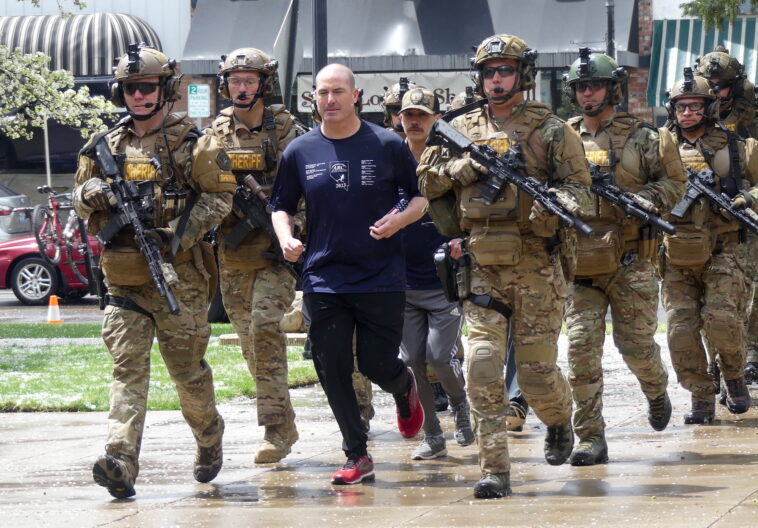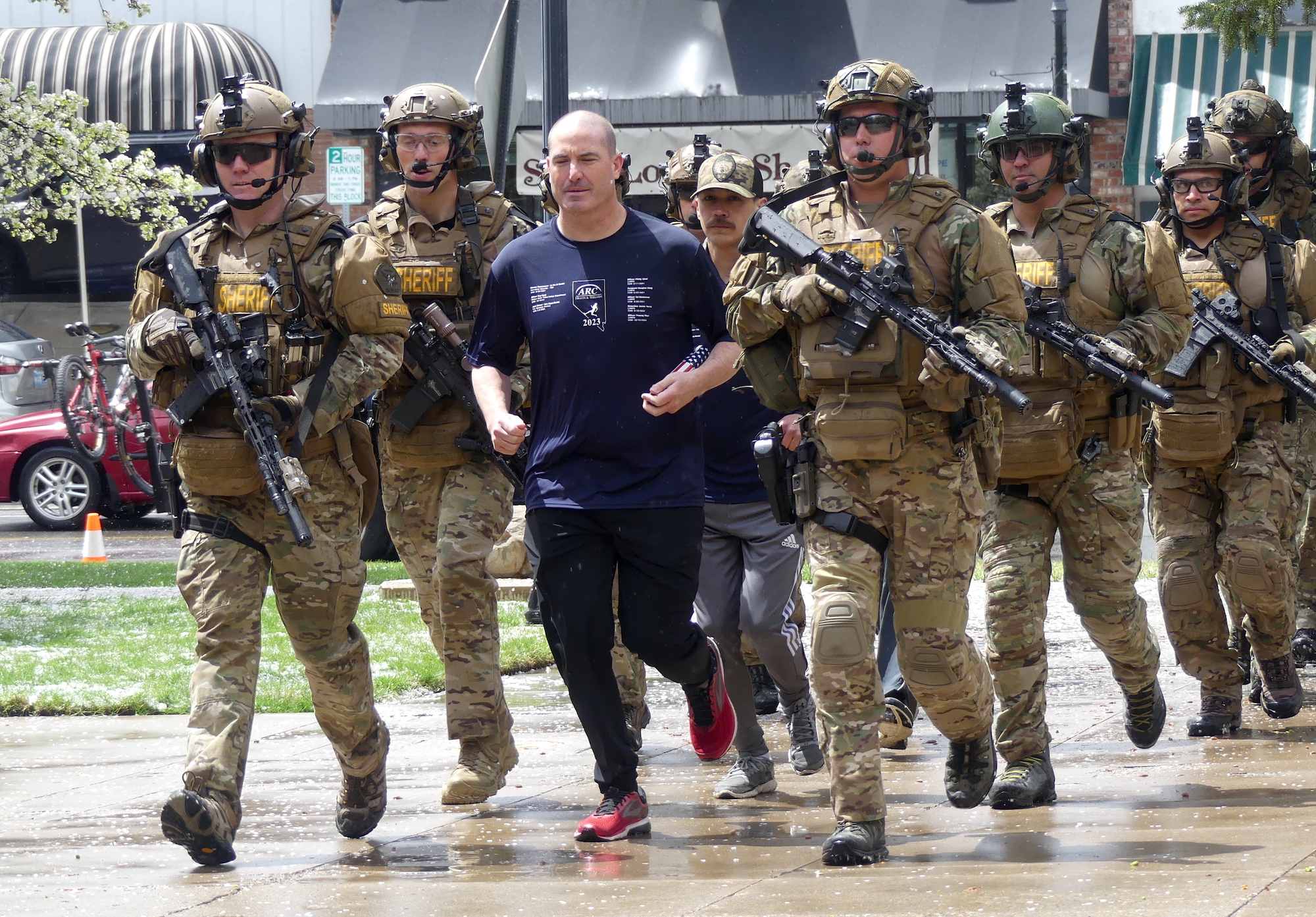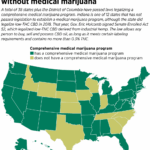Honoring a Legacy: The 25th Annual Southern Nevada Law Enforcement Memorial Relay Run
The recent 25th Annual Southern Nevada Law Enforcement Memorial Relay Run serves as a powerful reminder that the community stands in solidarity with those who have sacrificed everything in service to the public. On April 23, 2025, under clear skies and in the heart of Las Vegas, law enforcement leaders and supporters gathered at Majestic Park to launch a 434-mile relay that runs deep with symbolism and meaning. This event is not only a tribute to the 157 officers who lost their lives in the line of duty, but it also represents the tight bonds within the law enforcement community and between public servants and the citizens they protect.
In this piece, we explore the multifaceted significance of this memorial relay, looking into its origins, the unique challenges it faces, and the ways it builds bridges between various segments of society. We will also take a closer look at how the event embodies the spirit of unity and remembrance, while addressing some of the tricky parts and tangled issues that come with commemorative activities of this magnitude.
Reflecting on a Storied Legacy: A Tribute to Fallen Heroes
At its core, the memorial relay run is about honoring those brave individuals whose lives were tragically cut short while serving their communities. For many, the event is a solemn yet inspiring reminder of the value of sacrifice and the responsibilities that come with protecting the public. The rite of passing a baton down a 434-mile route symbolizes the enduring legacy of each fallen hero, creating a tangible link between their commitment and the ongoing work of law enforcement.
This public display of remembrance has several layers of significance. First, it offers an opportunity for the community to come together and share in a collective moment of reflection, acknowledging that behind every badge lies a human story filled with both courage and vulnerability. Second, the relay serves as an educational tool, revealing the subtle details of the daily challenges faced by law enforcement officers. It emphasizes that the path of duty is riddled with tension and loaded with personal sacrifice, a reality often obscured behind the public façade of duty and security.
Building Community Through Unity and Collaboration
One of the most remarkable aspects of the relay run is the collaboration it demands from various local law enforcement departments across Southern Nevada. Leaders from different agencies unite with a single purpose—to honor the memory of their fallen colleagues and to reaffirm their commitment to justice and community service. This unity is key in terms of creating strong partnerships within a network that must work tirelessly to find their way through the many complicated pieces of modern law enforcement.
Participating in a relay of this scale involves a high degree of coordination and trust. When LVMPD Undersheriff Andrew Walsh led the first leg, it was a powerful message that even in the face of overwhelming challenges, the law enforcement community is back-to-back with one another. Leaders, both on and off duty, stepped up to take the baton, each leg representing not only a personal commitment but also a shared mission to keep the legacy of fallen heroes alive.
Below is an overview of how collaboration among departments strengthens the community:
- Interagency Cooperation: Different law enforcement agencies pool resources and expertise, making it easier to tackle tricky parts and tangled issues head-on.
- Mutual Support: Being part of a relay run means providing psychological and emotional support, which is essential when facing nerve-racking moments on the path to remembrance.
- Shared Values: The event reinforces the idea that regardless of the specific agency, there is a super important common goal—to honor those who have served and to protect the community with unwavering determination.
The Symbolic Power of a 434-Mile Journey
The 434-mile relay is much more than a physical challenge. It represents a journey through the twists and turns of remembrance, sacrifice, and community solidarity. Each segment of the relay corresponds to a fallen hero, a subtle part of a larger narrative that invites participants and spectators alike to dig into the fine points of the law enforcement experience.
At first glance, covering such an expansive distance might seem overwhelming or intimidating. But when you take a closer look, you see that every mile is imbued with deep significance. This symbolic marathon is a moving tribute to individuals who gave everything for a cause greater than themselves, and it offers a moment to figure a path through the memory of sacrifices made in the line of duty.
Consider the following table, which outlines some of the symbolic elements associated with the relay:
| Symbolic Element | Representation |
|---|---|
| Mile Markers | Each mile represents an individual fall, a moment where bravery met sacrifice. |
| Baton Exchange | This transition symbolizes the passing of responsibility and the enduring commitment to uphold justice. |
| Starting and Ending Points | Starting in Las Vegas and culminating in Carson City underlines the journey from grassroots remembrance to statewide unity. |
| Unified Movement | The collective effort shows that while the road is long and sometimes intimidating, every step is taken together. |
The fine details outlined above play a critical role in ensuring that every participant, from the leader of the relay to the last runner, recognizes that the event is far more profound than a simple race. It is about confronting challenging bits that life throws our way and finding solace in the shared responsibility of preserving a legacy that cannot be measured solely by miles traveled.
Overcoming the Tricky Parts: Challenges Along the Route
Organizing an event of this magnitude naturally comes with its own set of tricky parts and complicated pieces. Coordinating a 434-mile relay across varying terrains and communities is, in many ways, as tangled and nerve-racking as the day-to-day challenges faced by law enforcement officers. Every segment of the relay demands careful planning, risk management, and collaboration among several independent units.
Some of the challenges that organizers and participants must get around include:
- Logistical Coordination: From planning rest stops to ensuring rapid medical support, every mile requires precise timing and careful planning.
- Safety Measures: Running a relay over such long distances means accounting for weather changes, traffic conditions, and other unforeseen obstacles that could arise.
- Team Coordination: Achieving unity among different agencies, while also dealing with the complex emotional tones that come with the memorial nature of the event, is a delicate task.
To manage these challenges, event leaders rely on detailed planning and the collective expertise of law enforcement professionals who have spent years finding their path through similarly tricky issues. This process not only makes the actual event smoother but also highlights the small distinctions in departmental procedures designed to ensure that every participant can complete their leg of the run with dignity and respect.
Community Impact: Strengthening Public Confidence Through Remembrance
Memorial events of this nature often have far-reaching effects, deepening the ties between law enforcement and the communities they serve. As the relay makes its way through Southern Nevada and eventually to Carson City, each community along the route is reminded of the human cost of public safety and the essential role that policing plays in maintaining order. The event offers an invaluable opportunity to address some of the subtle details and slight differences in public perceptions and policy debates surrounding law enforcement.
In many ways, public participation in the relay run is educational. It presents the community with a window into the nerve-racking realities behind the images of duty and heroism commonly seen in the media. Attendees and supporters are encouraged to poke around the underlying issues—discovering, for instance, how much coordination, foresight, and resilience is required just to figure a path through the day-to-day operations of a police department.
Key benefits for the community include:
- Enhanced Appreciation: Witnessing such a public tribute allows residents to grasp the magnitude of commitment required in law enforcement.
- Educational Outreach: Events like this serve as live case studies in understanding the dynamic between public service and sacrifice.
- Community Empowerment: By actively engaging in remembrance events, community members become more involved in supporting policy initiatives and accountability measures that keep public institutions strong.
- Solidarity and Healing: Memorial events provide a platform for communal healing and collective remembrance during emotionally charged times.
Long-Term Influence: Memorial Events and Policy Discussions
The ripple effects of the memorial relay stretch well beyond the day of the event. They influence discussions on public policy, accountability, and transparency in law enforcement. By openly commemorating fallen officers, the community and policy makers are reminded of the serious commitment required by those who serve. This constant reminder helps steer through moments of tension and conflicting opinions regarding funding, training, and broader legal responsibilities.
Notable points in policy discussions influenced by memorial events include:
- Resource Allocation: The necessity of adequately funding law enforcement is brought to the forefront when one considers the sacrifices made by so many individuals.
- Training and Preparedness: Memorial runs serve as a reminder that every officer must be prepared to face not only the tangible dangers of their job but also the nerve-racking emotional and psychological burdens.
- Transparency and Accountability: The deep respect shown during these events can promote more open conversations regarding departmental practices and accountability in cases of misconduct.
Policy makers are often challenged by the tricky parts of taking a balanced approach that satisfies both the needs of law enforcement personnel and the concerns of the wider community. However, the visible commitment displayed during events like the memorial relay can help break down some of the tangled issues that inhibit progress. By creating spaces where community members and law enforcement officials can collaborate on shared goals, these events play a key role in shaping a safer, more connected future.
Personal Reflections on Remembrance and Duty
Every time a community gathers in remembrance of those who risked their lives in the line of duty, it calls into question the overall balance between public service and personal sacrifice. For the families, friends, and colleagues of the fallen officers, the relay run is a bittersweet reminder of the legacy of courage and the overwhelming personal costs associated with protecting society.
Participating or even witnessing such an event can inspire personal reflection on what it means to commit oneself fully to the public good. Many find themselves contemplating such tricky parts as the subtle details in the daily experiences of law enforcement. In a world where the pathway of duty is both inspiring and intimidating, the relay run provides a moment to appreciate how every single step taken in memory of fallen heroes is a tribute to lives marked by determination and selflessness.
The personal stories shared during the event underscore several important messages:
- Commitment Beyond the Badge: Every officer’s life tells a story—a narrative filled with both accomplishments and moments of deep personal trial.
- The Value of Sacrifice: Reflecting on the legacy of 157 fallen officers inspires community members to think about what it means to stand together in difficult times.
- The Impact of Unity: Even the smallest gestures of solidarity can make a tremendous difference in times of crisis.
These reflections serve as a reminder that behind every public act of bravery lies an intricate web of hidden complexities. The relay run, with its every mile echoing the memory of sacrificed lives, offers a unique opportunity to get into a deeper conversation about the meaning of duty and honor in today’s society.
Strengthening Bonds: How Memorial Runs Foster Trust and Collaboration
Beyond its role as a commemorative event, the memorial relay contributes to nurturing a sense of trust between law enforcement agencies and the communities they protect. Given the backdrop of modern challenges—both in everyday policing and in broader societal dynamics—the event functions as a neutral ground where differences can be set aside in favor of common goals.
This kind of community engagement is essential in addressing some of the tense and confusing bits that often characterize law enforcement debates. By working together on an event that is super important to everyone involved, law enforcement officials and residents alike can find their way past partisan divides and focus on shared values and dreams.
Several benefits of such collaborative events include:
- Building Trust: Direct interaction during community events helps break down barriers and fosters a climate of mutual respect.
- Encouraging Dialogue: Open discussions at memorial events can defuse nerve-racking situations, enabling law enforcement to explain their challenges and allowing the public to voice their concerns.
- Uniting Diverse Communities: A memorial relay transcends cultural and political differences by focusing on the common bond of remembrance and respect.
- Inspiring Future Generations: When young people witness the unity and dedication of law enforcement officers, it plants seeds of trust and responsibility that can guide their future choices in community service.
Ultimately, these positive outcomes help ensure that the memory of the fallen continues to inspire improvements in community policing. By encouraging public engagement, memorial events provide ample opportunities to get into conversations that matter and to build lasting bridges between citizens and those sworn to protect them.
Taking the Wheel: Organizing Memorial Events Amid Tricky Challenges
Organizing a large-scale memorial relay is far from a walk in the park—it involves navigating a host of tricky parts that require the careful coordination of multiple agencies and community groups. Amid the nerve-racking pressures of maintaining public safety and accountability, event organizers must manage a host of practical details that can often feel overwhelming.
Some of the most intimidating hurdles include:
- Coordinated Route Planning: The 434-mile route must be mapped out with precision to ensure safety, adequate support, and effective communication at every mile marker.
- Resource Management: From securing emergency services to ensuring proper hydration and rest areas, the organizers work tirelessly to figure a path that addresses every tiny detail.
- Communication Protocols: Maintaining clear lines of communication across various agencies minimizes confusion and helps overcome even the most tangled issues.
- Public Relations: Balancing the serious tone of remembrance with the need for broad public participation demands careful messaging that is both respectful and engaging.
To manage these tasks, the event leaders work through a detailed checklist that often includes the following measures:
| Task | Details |
|---|---|
| Route Safety Analysis | Surveying the entire 434-mile route for hazards, weather conditions, and traffic patterns. |
| Emergency Response Coordination | Mapping out contingency plans and ensuring that medical personnel and security are on standby. |
| Interagency Communication | Setting up radios, mobile apps, and other systems to enable swift information flow among participants. |
| Public Information Outreach | Issuing press releases, updates, and social media notifications to keep the community informed in real time. |
Such careful planning ensures that despite the many overwhelming and off-putting challenges that might arise, every participant can complete their segment with pride and safety. In doing so, the organizers also underscore the message that true community strength lies in overcoming the twists and turns of real-life obstacles through solidarity and proactive planning.
Looking Ahead: The Future of Memorial Events in Law Enforcement
As we witness the culmination of another successful relay run, it is important to look ahead to the future of such commemorative events. Memorial events like the 25th Annual Southern Nevada Law Enforcement Memorial Relay Run are set to play an even more critical role in shaping the narrative surrounding policing, duty, and sacrifice. With public sentiment continuously evolving, these events must adapt by incorporating new technologies, innovative communication strategies, and broader community outreach programs.
In the coming years, we can expect to see memorial events develop further in several exciting ways:
- Enhanced Digital Engagement: With the rapid rise of social media and mobile applications, future relays might incorporate live-streaming, interactive maps, and augmented reality experiences to engage supporters from across the nation.
- Broader Community Integration: Partnerships with local schools, community centers, and civic organizations can help educate younger generations on the importance of public service and historical remembrance.
- Expanded Interagency Collaboration: As different entities work together more seamlessly, we will likely witness a more robust framework for planning and executing large-scale events that honor the sacrifices of law enforcement professionals.
- Innovative Safety Protocols: The introduction of advanced safety measures and real-time analytics will further ensure that every step of the relay is conducted smoothly, allowing participants to fully focus on paying tribute.
These developments are not only super important for preserving the memory of fallen heroes, but they also serve as a beacon for continuous improvement within law enforcement. In many ways, the future of memorial events mirrors the journey of modern policing itself—a journey filled with twists and turns, intimidating challenges, and yet, ultimately, the indomitable spirit of community solidarity.
Lessons in Resilience and Responsibility
The memorial relay run stands as a testament to the resilience and determination of law enforcement professionals. Beyond the physical challenges of covering 434 miles, the event encapsulates the very spirit of perseverance. Each mile traveled is a reminder that the road to justice is not always smooth, but it is paved with the relentless commitment of those who take the wheel day after day.
This reciprocal relationship between law enforcement and the community offers several important lessons in resilience and responsibility. Among these are:
- Emotional Resilience: The act of remembering while moving forward teaches us that it is possible to honor the past without being trapped by it.
- Shared Responsibility: When the community and law enforcement join forces, the heavy burden of public safety is distributed across many shoulders, making the overall load more manageable.
- Embracing the Journey: The long, winding path of the relay run is a metaphor for life itself—a sequence of challenging bits, slight differences along the way, and ultimately, progress achieved through shared effort.
For many participants, the relay is more than a memorial—it is a living classroom where the fine points of dedication, teamwork, and human compassion are constantly on display. It challenges each person involved to get into the mindset of endurance and mutual support, proving that no obstacle is too overwhelming when tackled with unity and perseverance.
Public Sentiment and the Role of Remembrance in Accountability
In recent years, issues confronting law enforcement have become increasingly loaded with challenges and public scrutiny. While debates over policy and procedure continue to unfold, events like the memorial relay serve as a grounding influence—a reminder that behind every controversial discussion lies a legacy of personal sacrifice and community trust.
The event has a unique ability to bridge the gap between the public and those tasked with maintaining order, offering a platform where trust is rebuilt and accountability is reinforced through a shared narrative of honor and remembrance. Such public displays help soften some of the tense debates in political arenas by bringing the human element back into focus.
Some ways in which memorial events help in strengthening accountability include:
- Humanizing Public Service: When communities see the personal sacrifices behind the uniform, it becomes clear that law enforcement is more about service and less about power.
- Facilitating Constructive Dialogue: The emotional weight and historical significance of the relay prompt participants to have open discussions about future reforms and improvements.
- Highlighting the Need for Continuous Support: Witnessing the difficulties and fine points of a live memorial event underlines the need for better funding, training, and community support initiatives.
Occasionally, the political landscape can feel riddled with tension when addressing the hidden complexities of law enforcement practices. However, events such as this provide tangible examples of dedication and sacrifice—elements that can put heated debates into perspective and inspire reform that aligns more closely with the values of justice, respect, and unity.
Embracing the Journey: Reflections and Future Aspirations
As the relay run moves toward its conclusion in Carson City on May 1, there exists a palpable sense of fulfillment mixed with an awareness of the work that still needs to be done. The journey that began in Las Vegas is emblematic of a broader pursuit—an ongoing commitment to excellence, honor, and the shared human experience of those who safeguard our communities.
This annual event is not merely a symbolic gesture, but a dynamic demonstration of the intertwined destinies of law enforcement and public service. It calls on everyone—whether an active participant, a family member of a fallen hero, or an observer—to reflect on the immeasurable costs of protecting the public and to consider the significant investments necessary to support those who continue to do so.
Looking ahead, there is hope that this relay run will inspire similar endeavors nationwide, each serving as a reminder that no challenge is too overwhelming to overcome through unity, empathy, and a shared commitment to honor our protectors.
Conclusion: A Tribute That Transcends Time and Distance
In our modern, often confusing world, the 25th Annual Southern Nevada Law Enforcement Memorial Relay Run stands as a beacon of hope, a symbol of the unity that can be found in times of trial. It reminds us that every twist and turn along the 434-mile journey is filled with moments of reflection, lessons in responsibility, and mutual respect. The baton passed from one officer to another is more than just a relay—it is a manifestation of a collective promise to remember, to support, and to continue striving for a better, safer society.
By coming together to honor the legacy of 157 fallen officers, the law enforcement community and the general public are reaffirming that real accountability begins with acknowledging the sacrifices that have laid the foundation for today’s standards of public service. The event challenges all of us to get into the conversation about what it means to truly serve, to understand the hidden complexities of a career dedicated to protecting life and liberty, and to embrace the journey with an open heart.
As we look to the future, it is clear that memorial events such as this one are not merely acts of remembrance, but stepping stones toward a more united, compassionate, and engaged community. They remind us that while the challenges may be tricky and the path occasionally nerve-racking, every effort to honor our fallen heroes paves the way for a more informed and connected society.
The relay run is a living, breathing testament to the enduring spirit of law enforcement—a spirit that shines as a constant source of inspiration, encouraging us all to find our way through life’s muddy paths and to recognize that, together, we can overcome even the most tangled issues.
In conclusion, the 25th Annual Southern Nevada Law Enforcement Memorial Relay Run is a super important event that not only commemorates the past but also shapes the future of community safety and public trust. It is a call to action—a reminder that every step taken, every mile covered, and every baton passed is a pivotal piece in the larger narrative of bravery, sacrifice, and unwavering commitment to justice.
Let us continue to support, honor, and remember the heroes who have made the ultimate sacrifice. Their legacy lives on in every act of courage, every moment of unity, and every community that stands together to celebrate the spirit of justice. May this memorial relay inspire us to steer through the challenges ahead with determination, heartfelt remembrance, and a deep commitment to serve the greater good.
Originally Post From https://news3lv.com/news/local/law-enforcement-leaders-unite-for-annual-memorial-relay-to-carson-city
Read more about this topic at
Honoring Our Fallen |
Honoring Fallen Heroes: Home



